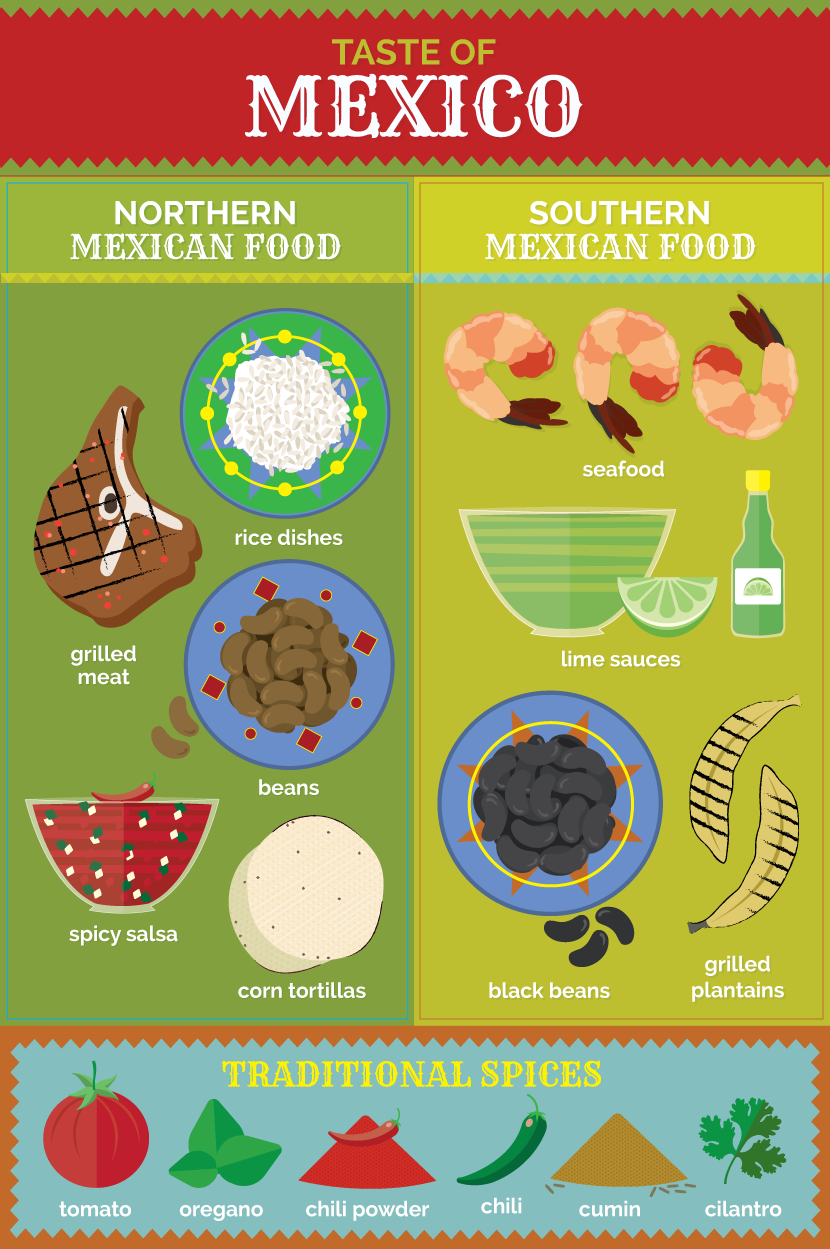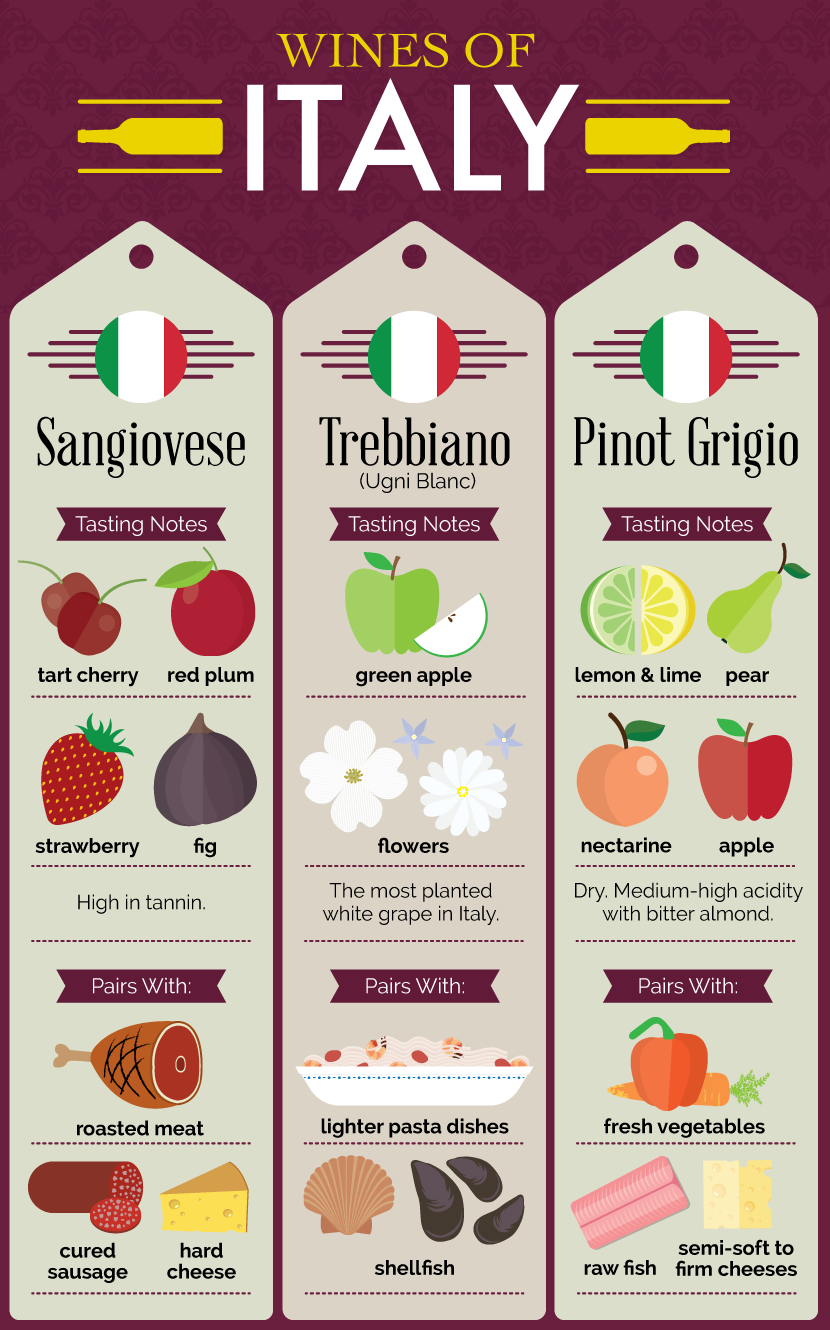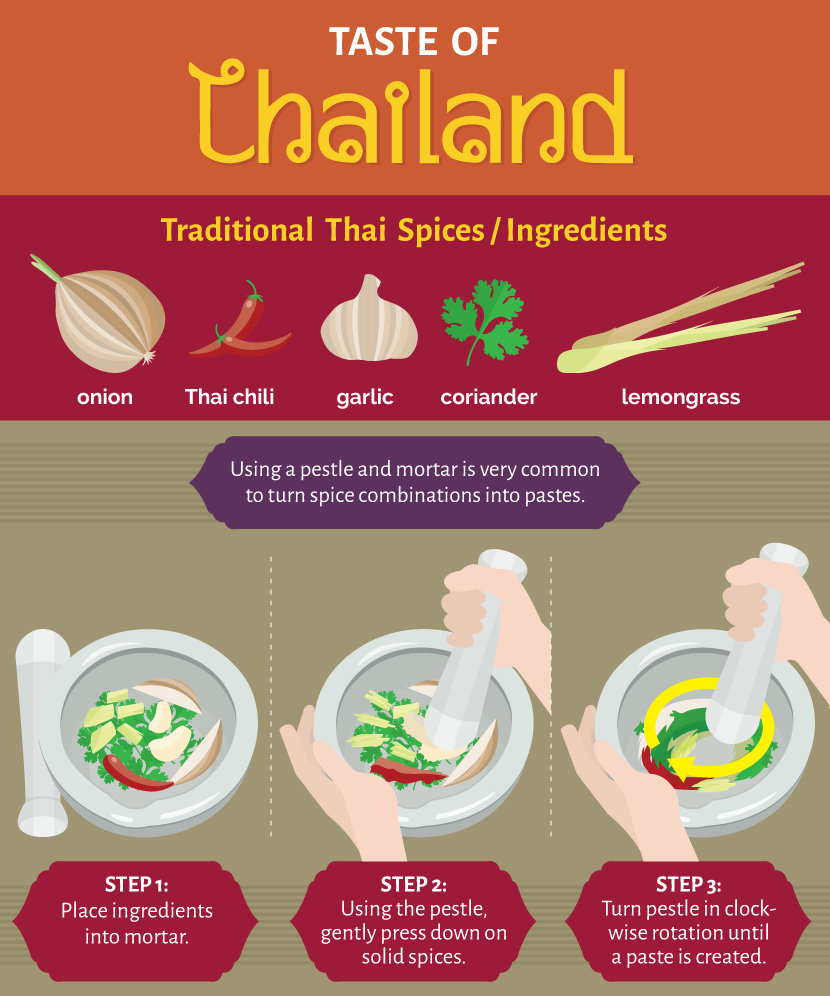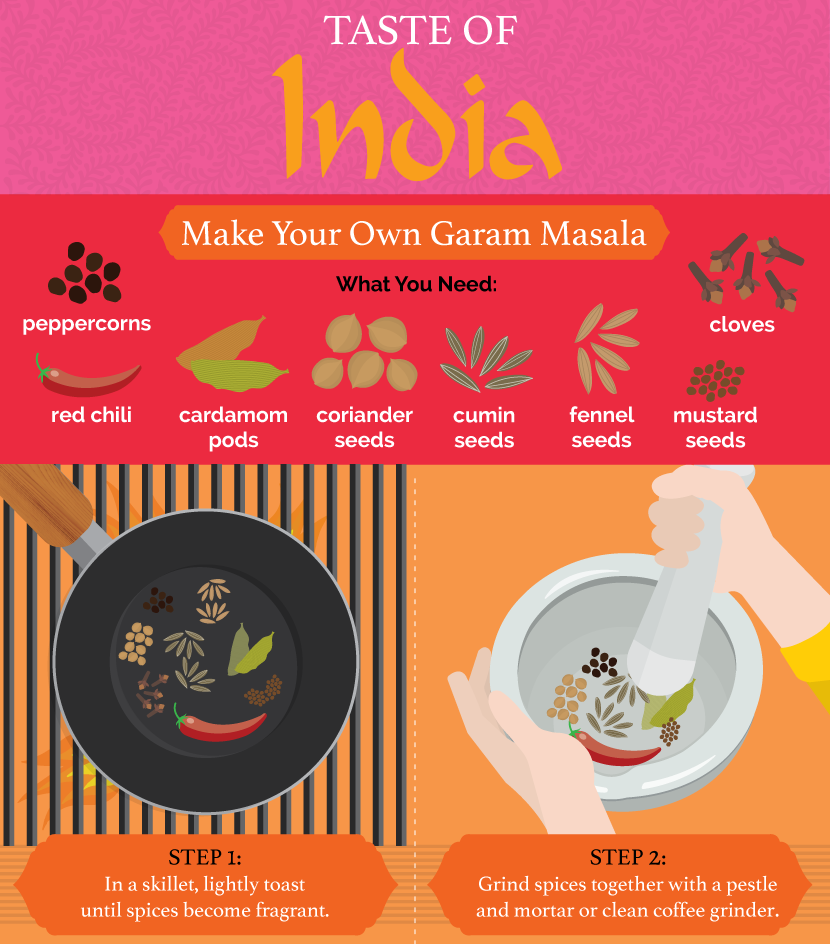International Flavor Profiles
Tastes From Around the World
One of the best things about dining out is tasting foods from different countries without having to take out your passport. The spices and ingredients used in each particular culture make the food unique.
The adventure begins when you try to recreate these dishes at home.
Mexican Food
Just south of the border is a rich, bright cuisine. Tacos and enchiladas may be staple Mexican dishes, but food from Mexico varies greatly from region to region.
Most people are familiar with Northern Mexican food, in which grilled meats are served with rice and beans.
Corn tortillas are used as bread, and spicy salsas serve as condiments for the many flavorful dishes. In Southern Mexico, you will find seafood dishes with lime sauces served with a side of grilled plantains and black beans.http://mexicanfood.about.com/od/introtomexicanfood/a/citiesstates_3.htm
Mexico has a warmer climate, allowing a longer growing period for fruits and vegetables. Some identifiable spices in Mexican cuisine include oregano, cumin, chili powder, chili, tomato, and cilantro.
If you combine these ingredients, you can make a delicious salsa. Most salsas are tomato-based, but in some cases, they can be replaced with tomatillos or a Mexican husk tomato.
The use of chili peppers is probably the most fascinating, unique characteristic of Mexican cuisine. Chilis are often cooked, smoked, or dried.
If they are dried, they can be ground and then added to sauces.http://www.ciaprochef.com/CFA/mexico/
In the classic Mexican “mole,” chocolate and chilis are ground together with chicken and chicken broth to make a thick, savory dish.

Italian Food
Italian food is probably the most revered international cuisine in North America. If you walk into any grocery store, you will find an aisle dedicated to pasta, pasta sauces, and Italian products.
However, Italian food goes beyond spaghetti and meatballs. In fact, authentic Italian food is very different from what Americans think it is.
Each Italian region has its own unique style of cooking and flavors. Unless you are dining at a North American restaurant chain, you are likely to see a menu with either Southern or
Northern Italian dishes. Most people are familiar with Southern Italian cuisine, which is bright and deep with a Mediterranean taste. Northern Italian features butter-based foods and hearty soups.http://www.rusticocooking.com/regions.htm
Italians are fortunate to have the Mediterranean climate in which to grow some of their well-known herbs, including oregano, parsley, bay leaves, and basil.
If you mix these together, you can make an exquisite sauce that will make you want to lick your plate. Sage is also another commonly used herb, as are rosemary and thyme.http://www.delallo.com/articles/fresh-herbs-spices-primer
Wine in Italy is a wonderful gift passed down from the Romans. After France, Italy is one of the top wine producers in the world. Tuscany has a special place in the hearts of wine and food lovers.
Sangiovese, trebbiano, and pinot grigio are the most appreciated Italian varietals.http://www.bottlenotes.com/winecyclopedia/region-italy

Thai Food
There is something comforting about a Thai coconut soup on a cold day. The fragrant aromas and warmth of Thai food could bring life back to anyone. Dishes like this have contributed to Thai food’s increasing popularity.
One thing that makes Thai cuisine so delicious is the use of pastes. These are traditionally made from whole spices and herbs ground together in a pestle and mortar or food processor.
They usually start with onions, garlic, and chilis. Then, other spices and herbs are added, such as lemongrass and coriander. You might also see the use of Kaffir lime, which contributes to the uniqueness of Thai flavor.
Lemongrass is also an easily identifiable Thai flavor. You will either find it chopped or pounded to release its intense scent. It is mainly used for soups and curries and is sold at speciality food stores.
You can also commonly find Galangal in Thai cuisine. In North America, you can find this ingredient in the frozen food section at Asian supermarkets or online. When used, Galangal adds depth and flavor to dishes.
For a grand finale, add some basil to add brightness and freshness to Thai dishes.

Indian Food
Curries, samosas, and naan bread. If you visit the United Kingdom, you must have some Indian food during your trip. On this side of the pond, the Indian craze is just now starting to boom.
o, why are the English so hot for curry?
Turmeric seems to be the most important Indian spice. Once it is added to oil, it releases a fragrant perfume that is identifiably Indian.
It also adds that golden hue to Indian dishes. It has also been linked to medicinal healing and anti-inflammatory properties.http://indianfood.about.com/od/thebasics/p/northindia.html Be careful when using this spice because it stains easily.
Certain Indian chilis are hard to find in North America. As a substitute, people use paprika and complement it with more popular chilis, such as serrano or cayenne.
In addition, Indian food often uses Garam Masala. This spice differs greatly from cook to cook. It might be used as a mix of ground cinnamon and cloves or a mix of coriander and cumin.
Others will make a mixture of cinnamon, cloves, and cardamom and add it to their dishes. Ground or whole, cumin is another very Indian spice. Along with coriander seeds,
these spices collectively produce the enticing flavors of Indian cuisine.http://www.foodnetwork.com/how-to/packages/food-network-essentials/indian-pantry-101-aartis-spice-essentials.html

Moroccan Food
When you think of Moroccan food, you might imagine dining at a restaurant where you use your hands as utensils and sit on pillows on the floor.
The exotic qualities of both the dining experience and the food draw more people to learn about this African cuisine.
Moroccan food goes beyond dates and olives. In almost every Moroccan dish, you will find parsley and cilantro.
Another very common ingredient is mint. Absinthe may be an illegal drug in some countries, but in Moroccan cuisine,
it is sometimes used in place of mint. You might also see anise in breads or thyme in desserts.http://www.sbs.com.au/food/article/2008/07/01/about-moroccan-food Almost everything you eat will be made with olive oil.
It has a special place when cooking Moroccan food. You will also see rosewater and orange flower water used to make fragrant and delicious desserts.
Bread is sacred in Morocco. If a piece of bread falls on the floor, you should pick it up and kiss it.
Many people save their leftover bread for the poor. Because forks and knives are not used, bread becomes an essential part of eating. It is used to pick up pieces of meat and soak up the yummy sauce from the tagine.http://fescooking.com/the-art-of-moroccan-cuisine
The next time you feel the travel bug start to itch, travel no further than your kitchen. Explore delicious and vibrant foods from around the globe without even having to stamp your passport!
Embed the article on your site

